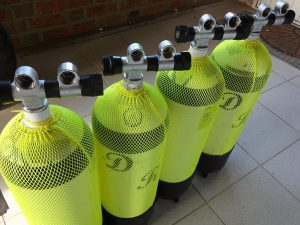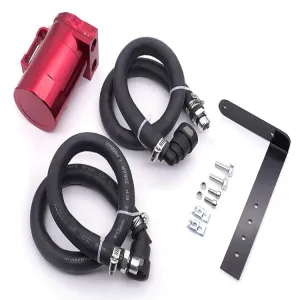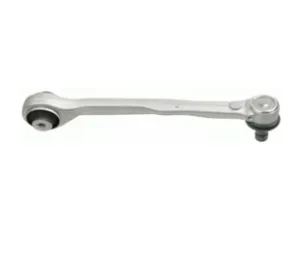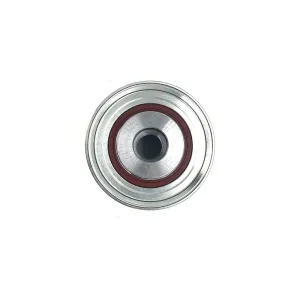In modern clinical medicine, ventilators, as an effective means of artificially replacing autonomous ventilation function, have been widely used in respiratory failure caused by various causes, anesthesia respiratory management during major surgery, respiratory support treatment and emergency resuscitation. It occupies a very important position in the field of modern medicine. The ventilator is a vital medical equipment that can prevent and treat respiratory failure, reduce complications, and save and extend the patient’s life.

basic introduction #
A ventilator is a device that can replace, control or change a person’s normal physiological breathing, increase lung ventilation, improve respiratory function, reduce respiratory work consumption, and conserve heart reserve capacity. When infants and young children are complicated by acute respiratory failure and active conservative treatment is ineffective, breathing is weakened, phlegm is abundant and thick, phlegm is difficult to expel, the airway is blocked, or atelectasis occurs , endotracheal intubation and ventilator should be considered .
The ventilator must have four basic functions, namely inflating the lungs, converting inhalation to exhalation, expelling alveolar air, and converting exhalation to inhalation, in sequence. Therefore, it must: ⑴ be able to provide the power to transport gas to replace the work of human respiratory muscles; ⑵ be able to generate a certain respiratory rhythm, including respiratory frequency and inhalation-exhalation ratio, to replace the function of the human respiratory central nervous system to control respiratory rhythm; ⑶ be able to provide Appropriate tidal volume (VT) or minute ventilation (MV) to meet the needs of respiratory metabolism; (4) The supplied gas should preferably be heated and humidified to replace the function of the human nasal cavity and be able to supply gases higher than those contained in the atmosphere. O2 amount to increase the concentration of inhaled O2 and improve oxygenation. Power source: compressed gas can be used as power (pneumatic) or motor as power (electric). Respiratory frequency and inhalation-to-exhalation ratio can also be controlled by pneumatic air control, electric electric control, pneumatic electric control, etc., and they can be switched between exhalation and inhalation. It switches to exhalation after reaching a predetermined pressure in the breathing circuit during inhalation (constant pressure type) or switches to exhalation after reaching a predetermined volume during inhalation (constant volume type). However, modern ventilators have both of the above. form.
Therapeutic ventilators are often used for patients with more complex and severe conditions. They are required to have complete functions and can carry out various breathing modes to adapt to the needs of changes in the condition. The anesthesia ventilator is mainly used for patients undergoing anesthesia surgery. Most of the patients do not have major cardiopulmonary abnormalities. The required ventilator can basically be used as long as it can perform IPPV with variable ventilation volume, respiratory frequency and inhalation-to-exhalation ratio.
working principle #
Respiratory support is one of the most critical means of saving the lives of emergency and critically ill patients. Therefore, ventilators have become indispensable equipment in clinical treatment; it is becoming more and more widely used in the fields of first aid, anesthesia, ICU and respiratory treatment; master Basic knowledge and basic operating methods of ventilators are essential knowledge and skills for clinicians. This article briefly summarizes some common sense about the clinical application of ventilators:
The basic principle of the ventilator: During spontaneous ventilation, the inhalation action generates negative pressure in the chest, and the passive expansion of the lungs creates negative pressure in the alveoli and airways, thus forming a pressure difference between the airway opening and the alveoli to complete inhalation; after inhalation, the thorax and lungs Elastic retraction creates an opposite pressure difference to complete exhalation. Therefore, normal breathing is due to the body’s breathing action creating an “active negative pressure difference” between the alveoli and the airway opening to complete inhalation. After inhalation, the elastic recoil of the thorax and lungs generates a passive positive pressure difference between the alveoli and the airway opening to exhale. , to meet the needs of physiological ventilation. Ventilator ventilation is driven by an external mechanical drive to create a positive pressure difference between the airway opening and the alveoli, while exhalation is caused by the elastic recoil of the thorax and lungs after the removal of the external mechanical drive pressure to create a passive positive pressure difference between the alveoli and the airway opening. That is, there is a “passive positive pressure difference” throughout the breathing cycle to complete breathing.
Main types #
1. Constant pressure ventilator
When inhaling, the ventilator pumps gas at a certain pressure into the airways to expand the alveoli and gradually increase the airway pressure. When the predetermined pressure is reached, the airflow stops and transitions to the expiratory phase. The tidal volume of this type of ventilator is related to the ventilator’s preset pressure, inspiratory time, flow rate, etc. If the flow rate is low, the inhalation time is short, and the predetermined pressure is low, the tidal volume will be small; otherwise, the tidal volume will increase. If lung compliance decreases or bronchospasm increases airway resistance, tidal volume may decrease.
The disadvantage of this type of ventilator is that when the airway pressure increases, the tidal volume cannot be guaranteed. The advantage is that when there is air leakage in the airway, it must also maintain a certain pressure and maintain appropriate ventilation. In short, this type of ventilator The pressure is guaranteed but not the capacity.
2. Fixed volume ventilator
The ventilator pumps a fixed volume of gas into the patient’s airways and lungs to produce the action of inhaling and exhaling. The advantage of this type of ventilator is that it can ensure a certain tidal volume within a safe pressure range and a closed airway state. The disadvantage is that airway leakage cannot be compensated, and excessive airway pressure can also cause hypoventilation. In short, this type of ventilator protects volume but not pressure.
3. Timed ventilator
It is a timed, pressure-limiting and constant-flow ventilator. The ventilator generates airflow, enters the airway for a predetermined time, stops inhalation, and produces exhalation. During the expiration phase, there is still low pressure air flowing through the airways. Its inspiratory time, respiratory frequency, inhale/exhale ratio, and inhaled oxygen concentration can be adjusted.
The above classifications are based on the transition between inspiratory and expiratory phases. They are also classified according to control mode (electric, pneumatic) and usage. There is also a type of high-frequency ventilation ventilator, which is characterized by high breathing frequency, low tidal volume, and non-sealed air circuit operation.
application #
With the continuous development of medicine, the functions of non-invasive ventilators have been continuously improved, making them more suitable for patients and providing better therapeutic effects. Non-invasive ventilators are suitable for: COPD, ARDS, type 1 respiratory failure , type 2 respiratory failure, post-operative respiratory failure and chronic bronchial emphysema. Non-invasive ventilators have many advantages: 1) intermittent ventilation; 2) no need for intubation; 3) different ventilation methods can be applied; 4) normal swallowing of food and humidification; 5) easy weaning; 6) physiological heating and humidification chemical gas.
Ventilation treatment and care using non-invasive ventilator:
1. Evaluate whether the patient is suitable for non-invasive ventilation, such as weak spontaneous breathing, comatose patients, uncooperative patients, excessive respiratory secretions and other organ symptoms, and patients with gastrointestinal bleeding . It should not be used.
2. Mission. Every time an awake patient undergoes non-invasive ventilation, an explanation should be given to relieve the patient’s fear, and the patient should be instructed to breathe in synchrony with the machine. During use, respiratory secretions can be spit out by removing the nasal mask. When using the nasal mask, keep your mouth closed to prevent air leakage. Be careful of choking when eating and drinking.
3. Adjust ventilator parameters according to the condition.
4. When using, pay attention to observe TRBP.SPO2 and mental changes, and whether the symptoms of hypoxia are improved, etc. Also pay attention to adverse reactions . 1) Gastrointestinal flatulence is likely to occur when the inspiratory pressure is greater than 25 cm water column; 2) Whether there is vomiting or aspiration; 3) When the mask compresses the bridge of the nose, adjust the tightness of the fixed belt appropriately; 4) Observe the tidal volume. Oronasal mask. Whether the nasal mask is leaking; 5) Appropriate heating and humidification of a dry oropharynx; 6) Upper respiratory tract obstruction, obesity, and short neck patients can be placed in the lateral decubitus position .
5. When the use of non-invasive positive pressure ventilation fails to achieve the therapeutic effect or is ineffective, pay attention to whether the condition has worsened, whether patient education measures have been implemented, and whether the machine parameters are adjusted appropriately. Non-invasive ventilators are used in ICU. Through close observation by medical staff and timely parameter adjustment according to the patient’s condition, the treatment can achieve satisfactory results.

 April 1, 2024
April 1, 2024 










